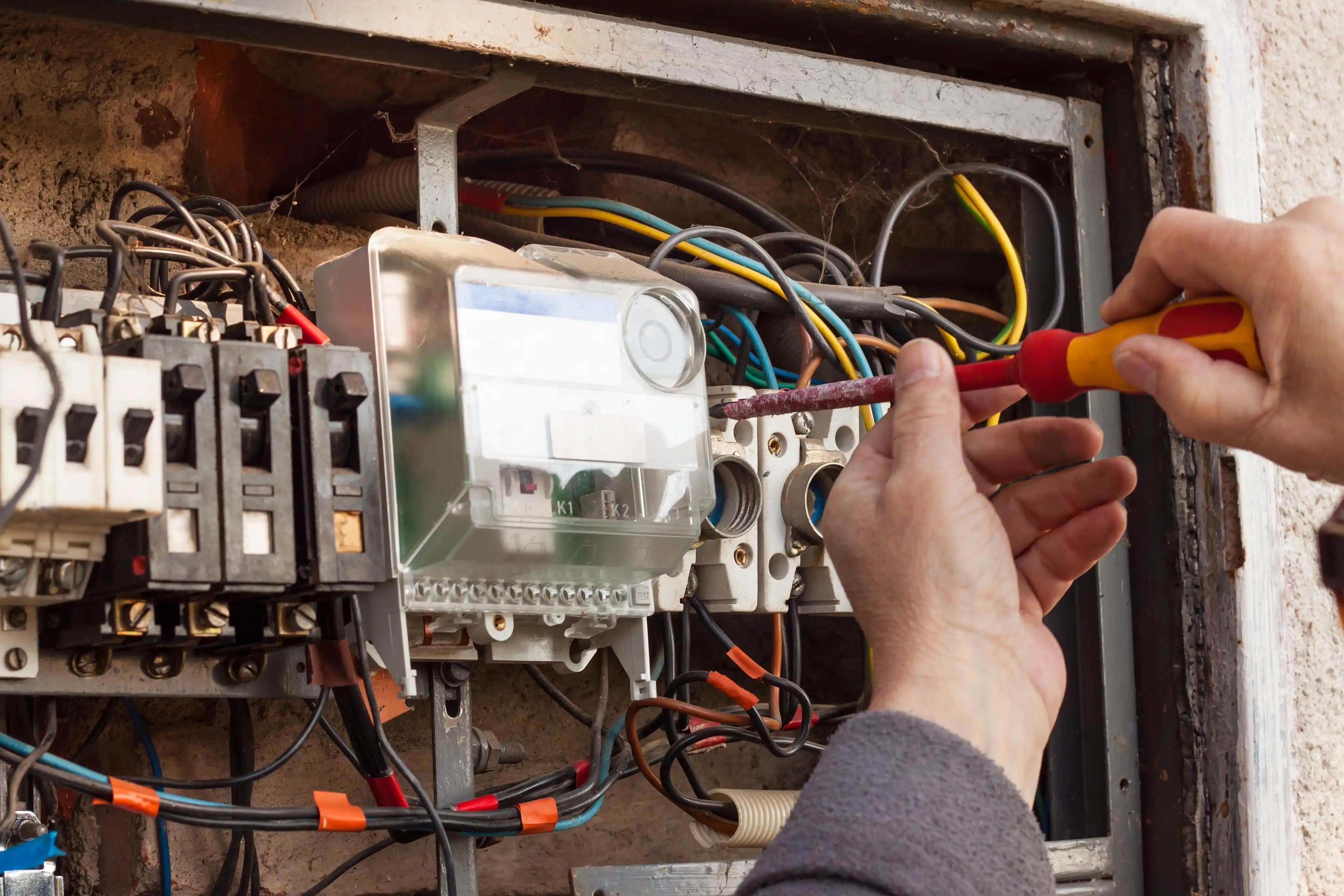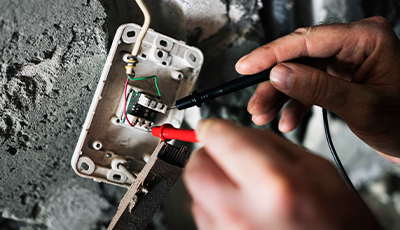Powerless sockets in your home? An experienced Level 2 Electrician explains possible reasons
Wiki Article
Usual Electric Troubles Every House Owner Must Find out about
House owners commonly come across various electrical troubles that can impact safety and security and functionality. Concerns like flickering lights and stumbled breaker are a lot more common than many recognize. These circumstances can indicate much deeper electric concerns that warrant interest. Recognizing the indicators and dangers related to out-of-date circuitry and dead outlets is vital. What procedures can be required to prevent these problems? Exploring these usual electric issues could expose essential understandings for keeping a risk-free home environment.
Flickering Lights: Causes and Solutions
Why do some homeowners experience flickering lights? Flickering lights can be a typical nuisance, often showing underlying electric concerns. One primary reason is loose or malfunctioning links within lights or electrical wiring, which can result in periodic power supply. In addition, utilizing high-wattage appliances on the exact same circuit might create voltage variations, leading to flickering or lowering. Another possible problem is an overloaded circuit, where too lots of tools draw power simultaneously, straining the electrical system. Obsolete or abject wiring can contribute to irregular electrical flow. In many cases, flickering lights may signify a trouble with the home's electric panel or solution line. Homeowners ought to deal with flickering lights quickly to prevent prospective risks. Solutions may include tightening connections, rearranging device tons, or speaking with a certified electrical expert for a thorough analysis. Determining the origin can aid guarantee a risk-free and stable electric system in the home.
Tripped Circuit Breakers: What You Required to Know
Have house owners ever before questioned what triggers their circuit breakers to journey suddenly? This usual concern commonly emerges from an overload of electrical circuits, where a lot of devices draw power at the same time. In such instances, the breaker serves as a safety device, disrupting the flow of electricity to avoid getting too hot and potential hazards. An additional regular reason is a brief circuit, which happens when a live cable get in touches with a neutral wire, developing a surge of electrical energy that trips the breaker. Ground faults can additionally lead to stumbled breakers; these happen when an online cord touches the ground or a based surface area, presenting serious safety dangers. Home owners must consistently evaluate their use of high-wattage devices to avoid straining circuits. In addition, comprehending the feature of circuit breakers can aid them react appropriately during a journey, ensuring their home stays safe and well-kept.Obsolete Electrical Wiring: Indications and Risks
Obsolete wiring can position significant risks to homeowners, often going unnoticed until issues develop. Houses built prior to the 1980s might still have light weight aluminum circuitry or knob-and-tube systems, which are no longer taken into consideration secure. Signs of outdated electrical wiring consist of flickering lights, often tripped circuit breakers, or melting smells near electrical outlets. These indicators may suggest that the electric system is overburdened or deteriorating.Additionally, house owners might observe burn marks around outlets or switches, which can suggest overheating. The risk of electric fires considerably increases with out-of-date circuitry, as these systems were not developed to handle modern-day electric lots. Property owners are encouraged to have their circuitry evaluated routinely, especially when restoring or including brand-new appliances. By recognizing these indications early, they can avoid dangerous situations and maintain a much safer living environment. Upgrading to existing electrical criteria is a proactive step in keeping home security and effectiveness.Frequently Blown Fuses: Fixing Tips
Regular blown fuses can suggest underlying electrical issues that might originate from outdated electrical wiring or overloaded circuits. Property owners experiencing this trouble should first recognize the devices connected to the impacted circuit. It is suggested to stay clear of utilizing multiple high-wattage tools concurrently, as this can result in circuit overload. If the issue persists, checking the circuit box for indications of wear or damages is important; a faulty circuit box may call for replacement.Additionally, inspecting for loosened connections within the circuit can help protect against future occurrences. House owners should likewise confirm that the integrates being used are of the right amperage, as using an inaccurate fuse can worsen the trouble. Speaking with a certified electrical expert is advised to assess the electric system even more if these fixing pointers do not resolve the problem. Addressing these problems quickly can aid mitigate dangers and assure the safety and security of the home's electric facilities.Dead Electrical Outlets: Common Reasons and Repairs
When a property you can try this out owner comes across a dead outlet, it can frequently provide disappointment and complication. Several common reasons might bring about this concern. One regular culprit is a stumbled circuit breaker, which can be easily reset. House owners should check their electric panel to inspect if any type of breakers are in the off setting. One more possibility is a malfunctioning outlet itself, which might call for substitute. In addition, loose electrical wiring links within the electrical outlet can interrupt power circulation, making evaluation essential.Sometimes, the trouble might stem from an overloaded circuit, especially when several tools are linked. In such instances, rearranging the electrical lots can solve the problem. Home owners should likewise think about the age of their electrical wiring; older systems may need updates to meet modern electric needs. If these steps do not rectify the scenario, getting in touch with a qualified electrical expert is a good idea to guarantee safety and security and appropriate diagnosis.Electrical Shocks: When to Be Worried
Just how can house owners identify whether an electrical shock warrants issue? Property owners should initially analyze the seriousness and context of the shock. A moderate fixed shock, commonly really felt when touching steel items, is typical and typically harmless. If the shock occurs while engaging with a plugged-in appliance or outlet, it might suggest a much more major issue.The location and regularity of the shocks are essential. Repetitive shocks from the very same source, particularly in damp areas like kitchens or washrooms, can signal malfunctioning wiring or poor grounding. Homeowners must also consider the experience of the shock; a shock that triggers discomfort or muscle contractions is more disconcerting than a plain tingle.If there's any unpredictability, it is advisable to speak with a qualified electrical expert. Neglecting possible electric hazards can result in major safety and security threats, consisting of fire or extreme injury.Overloaded Circuits: Prevention and Precaution
Overloaded circuits posture significant threats in residential settings, usually leading to electric fires or equipment damage (ASP Level 2 Electrician). Home owners must identify the indications of an overloaded circuit, such as often tripped breakers or dimming lights. Applying precautionary safety and security techniques can assist mitigate these hazards and guarantee a safer living atmosphereRecognizing Overloaded Circuits
What indications suggest that a circuit may be overwhelmed? House owners must be watchful for numerous vital indicators. Frequently tripped circuit breakers or blown fuses suggest too much lots on the circuit. Dimming or flickering lights, particularly when other devices remain in usage, can indicate a poor power supply. Furthermore, electrical outlets or buttons that feel warm my sources to the touch may show getting too hot, a potential fire hazard. Unusual humming audios from outlets also call for attention, as they can indicate electrical concerns. If devices run inefficiently or fall short to go to the website begin, it might be an indication of an overloaded circuit. Acknowledging these signs early can aid avoid serious electric troubles and advertise a much safer home atmosphere.
Preventive Safety Practices
To preserve a reliable and risk-free electric system, house owners need to implement precautionary safety and security practices that attend to possible circuit overloads. One efficient step is to stay clear of connecting way too many devices to a solitary electrical outlet, as this can go beyond the circuit's ability. Using power strips with built-in circuit breakers can aid disperse power securely. Property owners ought to additionally regularly evaluate cords and devices for damages and change any type of malfunctioning devices without delay. It is vital to ensure that breaker are functioning appropriately and to be knowledgeable about the total electrical power being used in each circuit. In addition, consulting an accredited electrician for routine inspections can determine prospective concerns prior to they intensify, guaranteeing a much safer living environment and extending the life expectancy of electric systems.Regularly Asked Inquiries
Exactly how Often Should I Have My Electric System Inspected?
Routine inspections of electric systems are suggested every 3 to five years. Home owners need to think about extra constant checks if they experience problems, undertake restorations, or stay in older homes to ensure safety and compliance.Can I Repair Electrical Problems Myself or Hire an Expert?

What Are the Signs of an Electrical Fire Threat?
Indicators of an electric fire threat consist of regularly stumbled circuit breakers, flickering lights, melting odors, stained outlets, or warm, humming cables. House owners must remain alert and look for expert aid if any one of these indications are present.Just how Do I Know if My Home Needs an Electric Upgrade?
To establish if a home needs an electrical upgrade, indicators include constant circuit breaker journeys, obsolete wiring, not enough outlets, flickering lights, and the visibility of older electric panels, showing possible security dangers and inadequacy.Exist Certain Safety And Security Tips for Do It Yourself Electrical Job?
When taking into consideration DIY electrical work, one need to always turn off power, use protected tools, verify circuit functionality, adhere to neighborhood codes, and seek advice from professionals for complex jobs to ensure safety and stop mishaps. An additional possible issue is an overloaded circuit, where also numerous tools draw power simultaneously, stressing the electrical system. The threat of electrical fires markedly boosts with out-of-date electrical wiring, as these systems were not made to manage modern-day electrical tons. Frequent blown merges can show underlying electrical issues that may stem from outdated electrical wiring or overloaded circuits. To preserve a effective and secure electrical system, homeowners should implement precautionary security techniques that attend to potential circuit overloads. Level 2 Electrician. Indications of an electrical fire danger consist of often stumbled circuit breakers, flickering lights, melting smells, discolored outlets, or cozy, buzzing wiresReport this wiki page